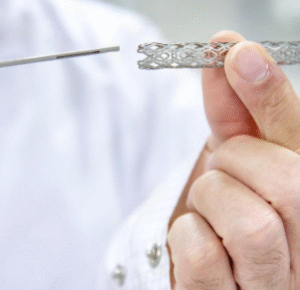1. Introduction to Orthodontic Dental Clinics
Orthodontic dental clinics specialize in correcting misaligned teeth and jaws to improve oral health and aesthetics. These clinics offer a range of services, from traditional braces to clear aligners, catering to patients of all ages seeking orthodontic treatment.
2. Importance of Orthodontic Care
Orthodontic treatment goes beyond cosmetic enhancements; it plays a crucial role in overall oral health. Properly aligned teeth are easier to clean, reducing the risk of tooth decay, gum disease, and other dental issues. Orthodontic clinics help patients achieve healthy, functional smiles.
3. Services Offered
Orthodontic dental clinics provide a variety of services tailored to meet individual needs. These may include traditional metal braces, ceramic braces, lingual braces, and clear aligner therapy such as Invisalign. Clinics also offer adjunctive treatments like retainers and jaw surgery.
4. Initial Consultation Process
The initial consultation at an orthodontic dental clinic is a crucial step in the treatment journey. During this visit, the orthodontist evaluates the patient’s oral health, discusses treatment options, and addresses any concerns or questions the patient may have. X-rays and impressions may be taken to aid in treatment planning.
5. Customized Treatment Plans
Each patient receives a customized treatment plan based on their specific orthodontic needs and goals. The orthodontist considers factors such as the severity of misalignment, jaw structure, and patient preferences when designing the treatment plan. This personalized approach ensures optimal results.
6. Traditional Braces
Traditional metal braces remain a popular choice for orthodontic treatment. These braces consist of metal brackets and wires that gradually move teeth into their proper positions. Orthodontic clinics offer modern braces that are more comfortable and aesthetically pleasing than older models.
7. Ceramic Braces
Ceramic braces are a discreet alternative to traditional metal braces. Made of tooth-colored or clear materials, ceramic braces blend in with the natural teeth, making them less noticeable. Orthodontic clinics often recommend ceramic braces for patients who desire a more subtle orthodontic treatment option.
8. Lingual Braces
Lingual braces are placed on the back surface of the teeth, making them virtually invisible from the front. This makes lingual braces an attractive option for individuals who wish to straighten their teeth discreetly. Orthodontic clinics with expertise in lingual braces can provide this specialized treatment.
9. Clear Aligner Therapy
Clear aligner therapy, such as Invisalign, offers a discreet and convenient way to straighten teeth. These custom-made aligners gradually shift teeth into alignment without the need for brackets or wires. Orthodontic clinics experienced in clear aligner therapy can help patients achieve their desired smiles with this innovative treatment.
10. Retention Phase
After active orthodontic treatment is complete, patients enter the retention phase to maintain their newly aligned smiles. Orthodontic clinics provide retainers, which help prevent teeth from shifting back to their original positions. Regular follow-up appointments ensure the success of the retention phase.
11. Addressing Malocclusions
Orthodontic dental clinics specialize in correcting malocclusions, or improper bites, which can lead to various dental problems if left untreated. Whether it’s an overbite, underbite, crossbite, or open bite, orthodontists at these clinics have the expertise to diagnose and treat malocclusions effectively.
12. Early Orthodontic Intervention
Orthodontic dental clinics also offer early intervention for children with orthodontic issues. By addressing problems such as overcrowding, thumb sucking, or tongue thrusting at a young age, orthodontists can guide jaw growth and tooth development, potentially reducing the need for extensive treatment later on.
13. Adult Orthodontics
Orthodontic treatment is not limited to children and teenagers; many adults seek orthodontic care to improve their smiles. Orthodontic dental clinics cater to adult patients, offering discreet treatment options and flexible scheduling to accommodate busy lifestyles.
14. Orthognathic Surgery
In some cases of severe malocclusion or jaw misalignment, orthognathic surgery may be necessary to achieve optimal results. Orthodontic dental clinics work closely with oral and maxillofacial surgeons to coordinate comprehensive treatment plans for patients requiring orthognathic surgery.
15. Managing Orthodontic Emergencies
Orthodontic dental clinics are equipped to handle orthodontic emergencies promptly and effectively. Whether it’s a broken bracket, loose wire, or discomfort from braces, patients can rely on their orthodontist to provide timely care and solutions to alleviate discomfort and prevent complications.
16. Integration of Technology
Orthodontic dental clinics leverage advanced technology to enhance treatment outcomes and patient experience. From digital impressions and 3D imaging to computer-guided treatment planning, technology plays a vital role in improving the accuracy and efficiency of orthodontic care.
17. Patient Education and Support
Orthodontic dental clinics prioritize patient education and support throughout the treatment process. Orthodontists and staff take the time to explain procedures, address concerns, and empower patients to take an active role in their orthodontic journey, leading to greater satisfaction and compliance.
18. Comfortable and Welcoming Environment
Orthodontic dental clinics strive to create a comfortable and welcoming environment for patients of all ages. From the waiting area to the treatment rooms, clinics prioritize cleanliness, organization, and patient comfort to ensure a positive orthodontic experience.
19. Flexible Financing Options
Orthodontic treatment is an investment in long-term oral health and confidence. Orthodontic dental clinics offer flexible financing options to make treatment more accessible for patients. Payment plans, insurance coordination, and financing options help patients manage the cost of orthodontic care effectively.
20. Continuing Care and Follow-Up
Orthodontic treatment requires ongoing care and follow-up to monitor progress and make adjustments as needed. Orthodontic dental clinics schedule regular appointments to assess treatment outcomes, address any concerns, and ensure that patients are on track to achieve their desired results.
21. Community Engagement and Outreach
Orthodontic dental clinics actively engage with their communities through various outreach initiatives. Whether it’s sponsoring local events, participating in school programs, or providing educational resources, clinics strive to make a positive impact beyond the walls of their practice.
22. Accreditation and Credentials
When choosing an orthodontic dental clinic, patients should look for accreditation and credentials that demonstrate the clinic’s commitment to excellence. Board-certified orthodontists, state-of-the-art facilities, and positive patient testimonials are indicators of quality orthodontic care.
23. Patient Testimonials and Reviews
Patient testimonials and reviews offer valuable insights into the patient experience at orthodontic dental clinics. Prospective patients can gain confidence in their choice of clinic by reading about the positive experiences of others who have undergone orthodontic treatment there.
24. Scheduling an Appointment
Scheduling an appointment at an orthodontic dental clinic is the first step toward achieving a straighter, healthier smile. Patients can contact the clinic by phone or online to arrange a consultation and take the first step toward a more confident smile.
25. Conclusion
Orthodontic dental clinics play a crucial role in helping patients achieve straighter, healthier smiles. With a range of treatment options, personalized care plans, and a commitment to excellence, these clinics empower patients to achieve their orthodontic goals and enjoy the benefits




